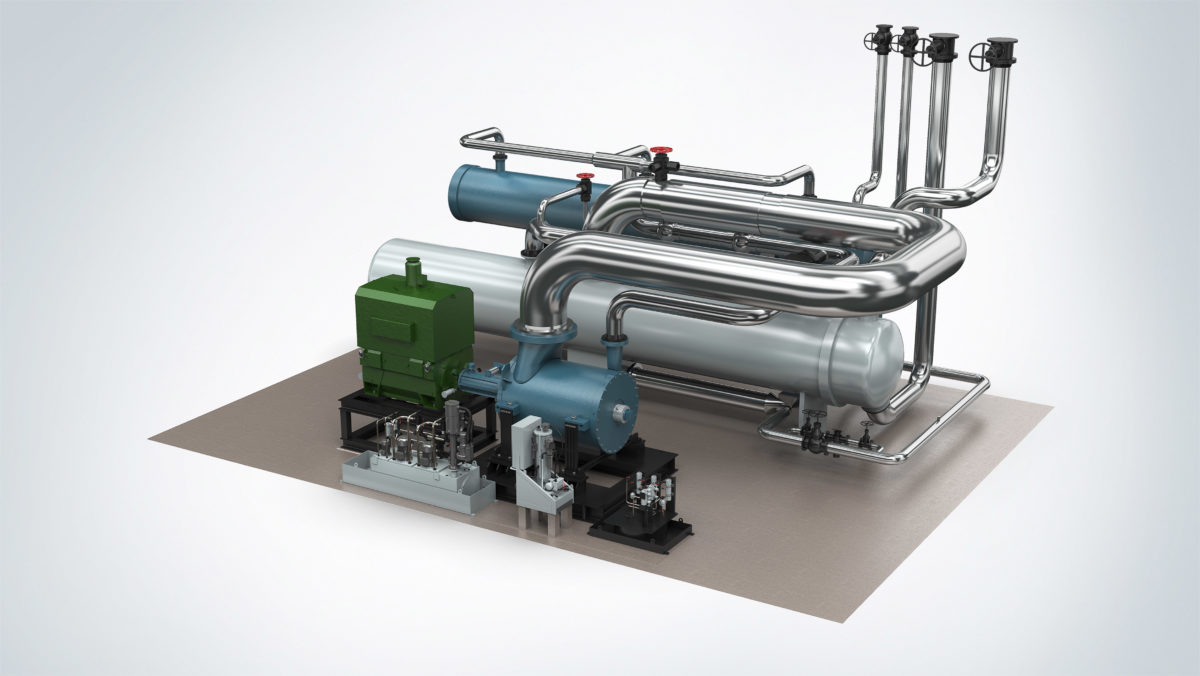Vattenfall Wärme Berlin AG, a unit of Sweden-based utility Vattenfall, and Germany's Siemens Energy AG are currently building an 8MW high-temperature heat pump at Potsdamer Platz in Berlin to provide green district heating with waste heat and renewable electricity, and feed it into the German city's district heating network.
“The facility makes efficient use of renewable power from the local grid,” a Siemens Energy spokesperson told pv magazine. “Solar PV is not the predominant source in Berlin and direct coupling of heat pumps with solar without storage is a challenge, as heat pumps are more economical the more operating hours they accumulate. However, solar in general is an opportunity the more it penetrates the grid as it provides ever more economic and green power to feed power to heat facilities. “
The Qwark3 project – named according to the German acronym for “coupling of district heating, power, and cooling” – should begin commercial operations by the end of this year. Vattenfall and Siemens signed the agreement to build the facility in March 2021.
The heat pump is expected to provide 8MW of thermal capacity to the district heating network and delivers forwarding temperatures of between 85 C and 120 C. The high-temperature heat pump from Siemens Energy can deliver heat to the district heating network as required, even under cold winter conditions.
“In the long run, district heating temperature levels will reduce for better efficiency,” the spokesperson said. “But until all the networks are converted, it will take decades for which high-temperature heat pumps are an important bridge technology to decarbonize heat. In parallel, more and more industry applications will demand decarbonized heat from high-temperature heat pumps.”
The cooling plant operated by Vattenfall at Potsdamer Platz is able to provide cooling and heating to about 12,000 offices, 1,000 housing units, and numerous cultural facilities.
“Putting a new high-temperature heat pump into operation, however, will provide a more environmentally friendly way of linking heating, cooling, and electricity in the future,” the two companies said in a joint statement in March 2021. “The new technology turns waste heat into a usable product, improving the energy-efficiency of the cooling power generation process while providing the urban district in Berlin with green heat from renewable electricity.”
The Siemens Energy spokesperson said that the cost of the heat pump is highly project-specific and depends a lot on economies of scale. “The power price is a major factor around the economics and the lower the power price, the better. If solar power helps reduce average power prices this has a positive effect on the application of heat pumps,” said the spokesperson.
This content is protected by copyright and may not be reused. If you want to cooperate with us and would like to reuse some of our content, please contact: editors@pv-magazine.com.




By submitting this form you agree to pv magazine using your data for the purposes of publishing your comment.
Your personal data will only be disclosed or otherwise transmitted to third parties for the purposes of spam filtering or if this is necessary for technical maintenance of the website. Any other transfer to third parties will not take place unless this is justified on the basis of applicable data protection regulations or if pv magazine is legally obliged to do so.
You may revoke this consent at any time with effect for the future, in which case your personal data will be deleted immediately. Otherwise, your data will be deleted if pv magazine has processed your request or the purpose of data storage is fulfilled.
Further information on data privacy can be found in our Data Protection Policy.